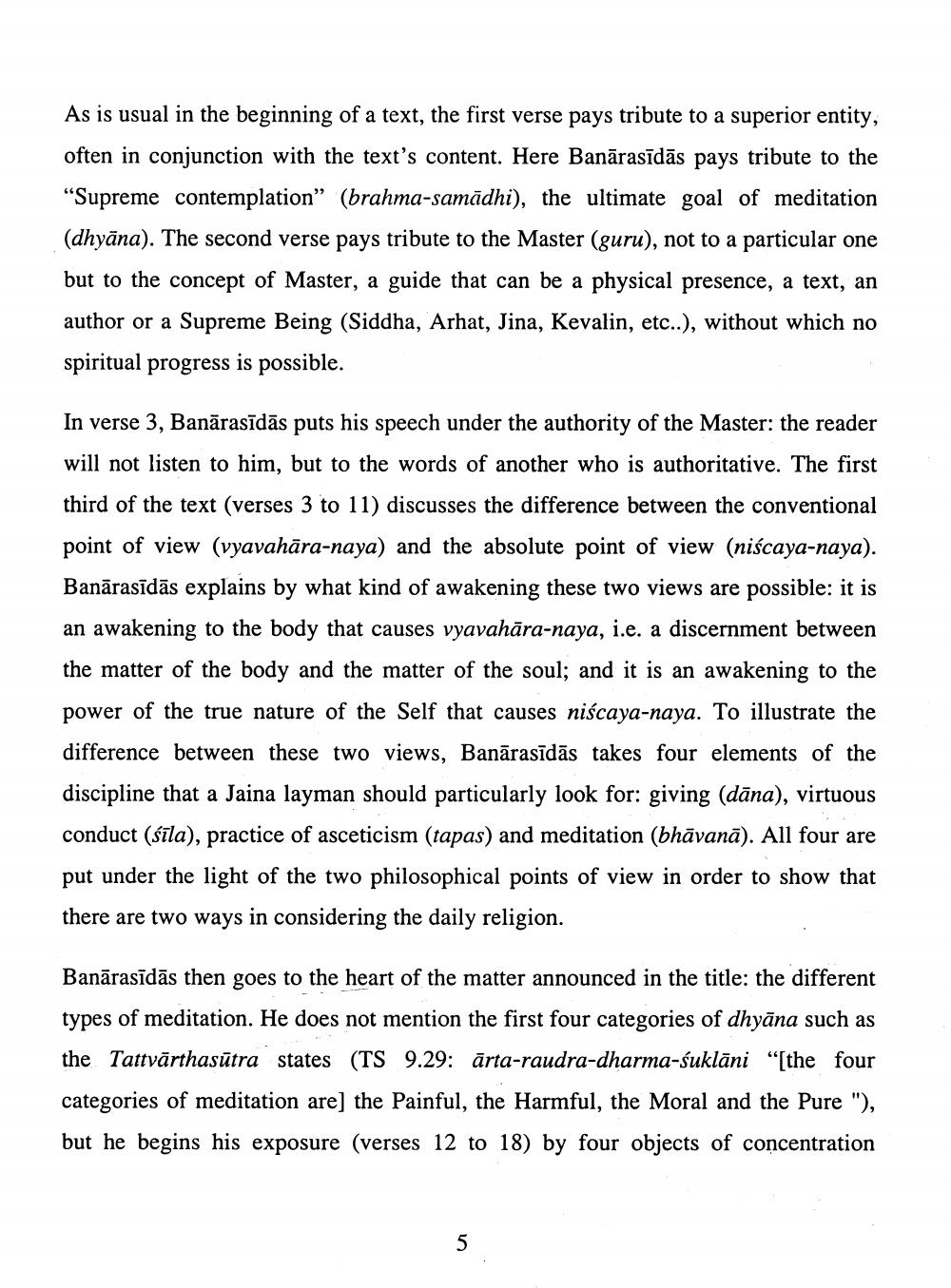Book Title: Dhyana Battisi Author(s): Jerome Petit Publisher: Hindi Granth Karyalay View full book textPage 9
________________ As is usual in the beginning of a text, the first verse pays tribute to a superior entity, often in conjunction with the text's content. Here Banārasīdās pays tribute to the "Supreme contemplation" (brahma-samādhi), the ultimate goal of meditation (dhyāna). The second verse pays tribute to the Master (guru), not to a particular one but to the concept of Master, a guide that can be a physical presence, a text, an author or a Supreme Being (Siddha, Arhat, Jina, Kevalin, etc..), without which no spiritual progress is possible. In verse 3, Banārasīdās puts his speech under the authority of the Master: the reader will not listen to him, but to the words of another who is authoritative. The first third of the text (verses 3 to 11) discusses the difference between the conventional point of view (vyavahāra-naya) and the absolute point of view (niscaya-naya). Banarasīdās explains by what kind of awakening these two views are possible: it is an awakening to the body that causes vyavahāra-naya, i.e. a discernment between the matter of the body and the matter of the soul; and it is an awakening to the power of the true nature of the Self that causes niscaya-naya. To illustrate the difference between these two views, Banarasīdās takes four elements of the discipline that a Jaina layman should particularly look for: giving (dāna), virtuous conduct (śīla), practice of asceticism (tapas) and meditation (bhāvanā). All four are put under the light of the two philosophical points of view in order to show that there are two ways in considering the daily religion. Banarasīdās then goes to the heart of the matter announced in the title: the different types of meditation. He does not mention the first four categories of dhyāna such as the Tattvārthasūtra states (TS 9.29: arta-raudra-dharma-suklāni "[the four categories of meditation are] the Painful, the Harmful, the Moral and the Pure "), but he begins his exposure (verses 12 to 18) by four objects of concentration 5Page Navigation
1 ... 7 8 9 10 11 12 13 14 15 16 17 18 19 20 21 22 23 24 25 26 27 28
